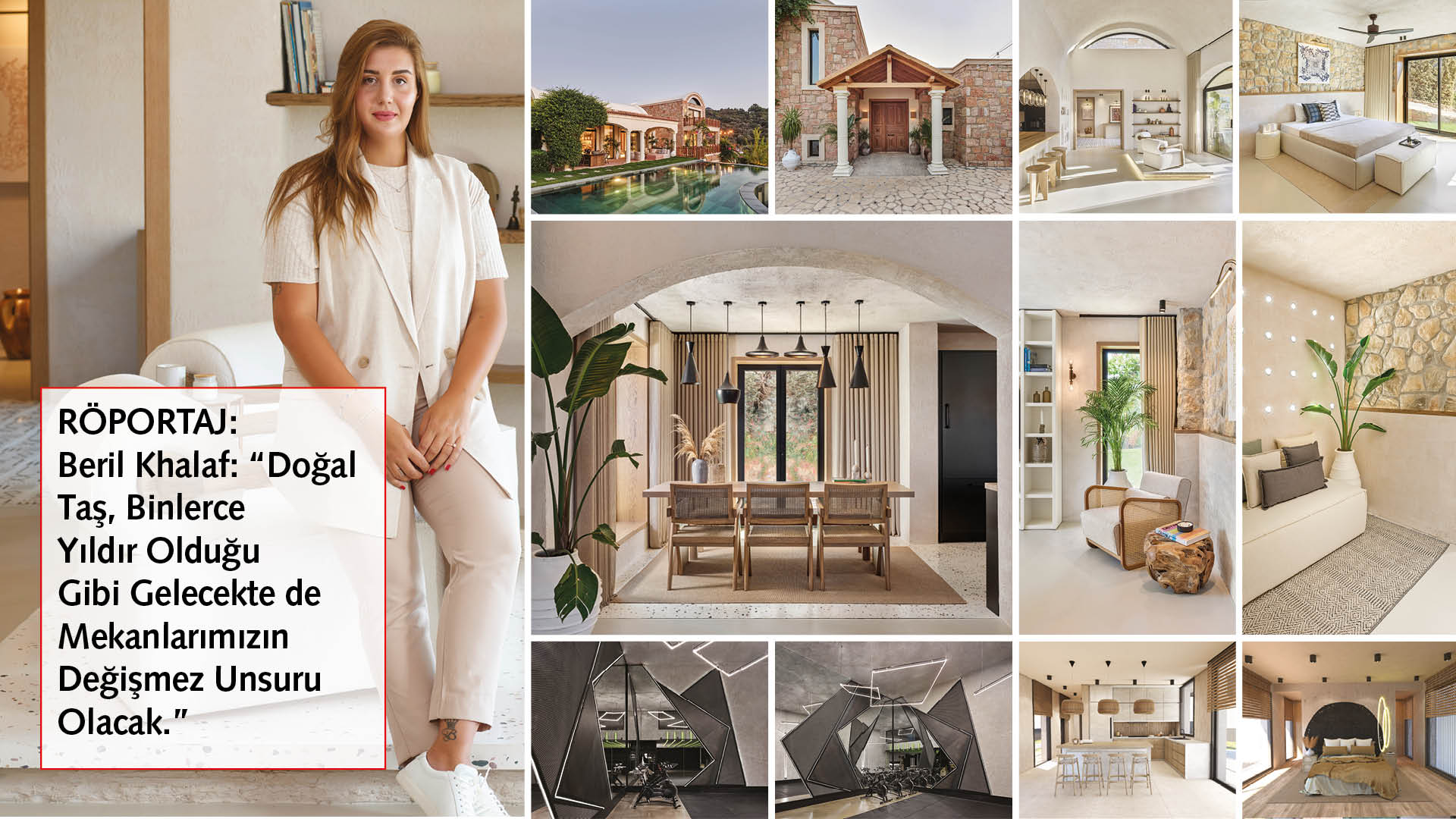Interior designer Beril Khalaf won the Honorable Mention award in the “Residential” category at the Los Angeles-based International Design Awards (IDA) 2021, where the world’s best projects compete. In her offices based in New York and Istanbul, she does interior design projects and application works in a wide range of residential, office and commercial areas. In the projects of Beril Khalaf Interiors which she is the founder, she internalizes the habits, expectations and needs of the employer and deals with each project within the natural, cultural and historical context of the place it belongs. We talked with Beril Khalaf, who makes unique designs shaped with a 360-degree holistic approach, about her career journey in interior design, her current projects and her relationship with natural stone materials.
How did you cross paths with interior architecture and design?
Beril Khalaf: I started university with the department of cinema and
television. The experiences during this process actually helped me to
understand how the relationship between stage and light affects me. Then, I
continued my education in the field of interior design and completed the
department of Interior and Environmental Design at Bahçeşehir University. And I
participated in various courses and seminars in New York for a year to expand
my design vision. Currently, under the name of Beril Khalaf Interiors, I carry
out the interior design and application works of national and international
residential, office, and commercial spaces with my professional team in our
Istanbul and New York-based offices.
What are the elements that make an interior design project yours?
BK: When we start the design process, we are guided by the
characteristics of an interior, the spaces that can be created, blind spots
that can be evaluated, areas that are not evaluated, or areas that can turn
into a striking one with a small touch. The fact that I am a very
detail-oriented person is also reflected in the spaces I design. As a team, we
are moving in this direction. These thoughtful details make the entire project
unique and distinctive. We consider each project within the natural, cultural
and historical context of its place. In the case of all these data, we get
completely different results from each other. And each project has a unique
plot and story.
Can you tell us about the process you followed for the design?
BK: First of all, we hold our first meeting in the project area. It is
very valuable for us to go to the first day of discovery with our client. Because
it is the first process in which we can clearly observe their expectations from
the place and understand how to respond to their dreams. In this process, we
listen and observe a lot. Then, we follow a process that changes according to
the volume of the project. The second stage is a process based on our own
observations. We start to produce with the location of the project, the
expectations and the inclusion of our design language in this process. This is
the stage where we spend the most time, reading and researching a lot. After we
collect all this data and put it into a design language, the design reaches its
final state, after we talk to our clients once again and think about it, if
there is something they want to add or touch again, we change it.
Can you give examples of the changing demands of consumers during the pandemic process and its reflection on the design process?
BK: Everyone started to much more attention to their living spaces. Especially for working remotely, the need for comfortable workspaces at home has emerged. So, the rate of making changes or allocating time for this has increased. I think the consumers need space for a small office or an area for sports or reserved for new hobbies indoors. It has become important for the interior to be designed functionally and to be able to change shape according to the demands.
You live and produce in two of the world’s most impressive major
cities. If you had to make a choice, would you say New York or Istanbul?
BK: The textures and energies of the two cities are different. At one
point, they are very similar to each other. Both cities are always dynamic and
have lots of points open to discovery. If I had to make a choice, I think I
would prefer Istanbul, especially because of my family and friends.
What are the most important elements that you pay attention to in
the design of residential interiors?
BK: First of all, the most important factor is to come up with
designs that can meet the needs. To analyze the expectations of our clients
from the space they will live in and to transform these solutions into
rational, useful and comfortable designs. In addition, since these spaces will
be used for a long time, we care about making long-lasting materials a part of
the design correctly. Since a lot of time is spent in residential interiors and
it is the goal of using it for many years, it is of great importance that the
designs we make do not get old.
How do users’ expectations affect your designs?
BK: Every new host draws us on a different path. Their expectations,
tastes, and needs enable us to approach the design language we have decided at
every point from another point of view. In order to take ourselves one step
further each time, we research and think more, and present a design adventure.
Sometimes, an idea can be added by the host to the space that we dreamed of in
the first place. Blending this idea with our own design language reveals
different details in every project.
To what extent do you reflect current trends in your designs?
BK: Current trends can sometimes support our designs. Although the
designs we make do not completely follow the current trends, they can be
incorporated into our designs at some points in line with the wishes of the
homeowner or as a natural effect.
In every project you handle, you design all the details from A to
Z with a holistic approach and specifically for the project. What does this
approach add to your projects?
BK: I think it gives the project its soul and turns into a story. As
soon as you step into the interior, the details attract you. Being a
detail-oriented person causes me to pay more attention to details. For this
reason, we are moving in this direction as a team. I think the designed details
make the whole project unique. It makes each project unique.
What do you think about the contributions of developing technology
to architecture and design?
BK: Technology is advancing at an incredible pace, changing and
transforming our lives. Of course, it is not possible for architecture and
design not to get their share from this. Technology makes the work of us
architects easier with digitalization. Thanks to digital design programs and
communication facilities, we can carry out projects on a global scale and work
in coordination with our teammates at the other end of the world. Thanks to
BIM, building information modeling, all teams and consultants involved in a
project can be involved in the project more effectively and efficiently. The
support of technology, when combined with basic design principles, enables us
to create high-quality, sustainable architecture and mediates to make
architecture a useful discipline for the whole society. Building production and
construction technologies are also adapting to the new possibilities offered by
technology day by day. Augmented reality, 3D printers, drone technologies are
some of them. It is inevitable that the developments in technology will affect
the end user in their living spaces. With building automation systems and IoT
technologies, our homes and offices are getting smarter, more comfortable and
safer day by day.
What would you like to say about architecture and design education
in Turkey?
BK: In recent years, the number of schools providing architectural
education in our country has increased at an incredible rate. However, most of
these schools do not have a well-structured systematic and intellectual
infrastructure that will do justice to architectural education. In addition,
academic staff is not enough. This being the case, thousands of young architect
candidates who graduated without having sufficient architectural knowledge and
manners, and without having the necessary equipment in design power and design
management, cannot find a job due to the economic conditions of the country and
fall into despair.
With GKT Bodrum House, you won the Honorable Mention award in the
“Residential” category at the Los Angeles-based International Design
Awards (IDA) 2021. What kind of difference do you think you have made with this
project?
BK: GKT Bodrum House is a stone house located on a land of
approximately four decares in Yalıkavak. The building was built only with Çilek
Stone, which is found in Bodrum. Due to the availability of the land and the
sensitivity of the landlord to nature, we used a solar system in the house to ensure
that all electricity costs were obtained with solar energy. Considering
sustainability and ease of use, we applied micro concrete on the floor and
preferred decorative plaster for the walls. Taking advantage of the robustness
and compactness of the traditional architecture of the building, we took full
advantage of daylight with a high insulation layer, heat-proof glasses, and
some tears opened in the architecture. In general, we aimed to provide peace
and tranquility at home by creating spacious and open spaces in GKT Bodrum
House.
What would you say about your 7.15 GYM project in Maslak, which
has been making influence?
BK: We designed and implemented the interior of the 7.15 GYM
project. We designed 7.15, which is a gym, as a large stage that can be used
for sports shootings at every point. We preferred textures, colors, and
lighting elements suitable for both this idea and the user profile. We wanted
to show the space wider by using perspective mirrors on the walls. Also, we
used the gross concrete color decorative plaster that we applied to the whole
of the walls to create a raw and unoccupied atmosphere in the interior. On the
floors, we applied the micro concrete material from the entrance to the rear
end of the space. In the project, we aimed to create a raw structure and
nurture it with sustainable design elements, so that this place can be used as
the main center of a newly created brand for many years.
As an interior designer who also produces in different countries
of the world, how do you position the design culture in Turkey on a global
level?
BK: We live in a global world where local values are becoming more
important. The richness of Turkish culture also strengthens our hands as
architects and designers in order to make a global difference in the design
environment. It is necessary to carry this richness beyond the traditions by
interpreting it with a contemporary vision and presenting it to the world with
a more global perspective. Of course, it’s not about emptying it by copying the
traditional figures I’m talking about. By absorbing and interpreting our own
values well and conveying them in a universal language, Turkish design will
gain a stronger position on the world stage.
How important is the natural stone material that you often choose
to use in your designs?
BK: From the first moment the concept of shelter, which is the most
important spatial need of humanity, emerged, natural stone has been an
indispensable part of living spaces. This material, which dates back even
before the existence of man on this planet, was used to shape buildings as a
load-bearing building material in the past, but today it is more preferred for
floor and wall coverings. The most important reasons why we prefer stone are
its naturalness, long-lasting structure, and unique aesthetics. These
miraculous works of art from nature add a unique spirit and style to any
interior where we use it. Sometimes as a reflection of prestige and luxury,
sometimes of simplicity and naivety, natural stones can take on identities suitable
for the character of the spaces we design. Marble, onyx, and basalt are among
the natural stones we most prefer to use. Our country is literally a natural
stone paradise. We are a team that takes care to use Turkish natural stones in
our projects.
How important do you think the natural stone will have in the
spaces and designs of the future?
BK: Natural stone will be a constant element of our spaces in the
future, as it has been for thousands of years. I have no doubt that this
passion, which has been going on since antiquity and even before, will continue
in the coming centuries. It is not possible to achieve the aesthetic and
functional value, efficiency, longevity, and durability offered by natural
stone with different materials at the same time. Especially in the near future,
when the pursuit of being close to nature will increase over time, the
biophilic design will become more and more widespread, and the pursuit of
sustainable architecture will gain more importance, natural stone will continue
to maintain its priority in our spaces.
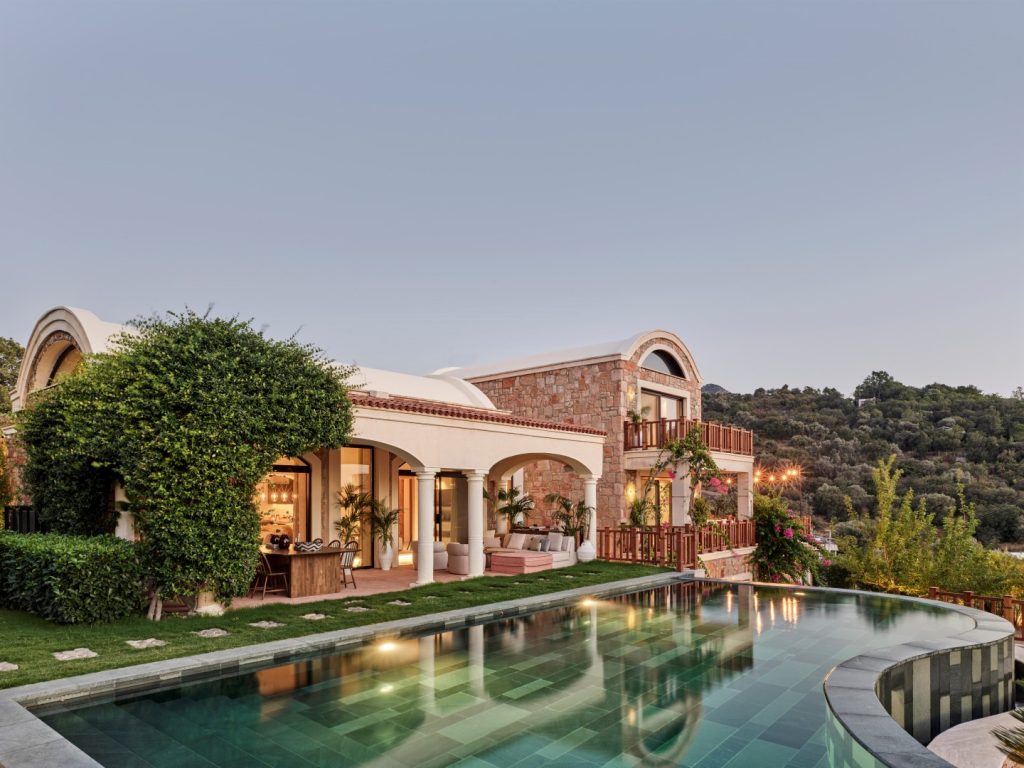
GKT Bodrum Evi / GKT Bodrum House. 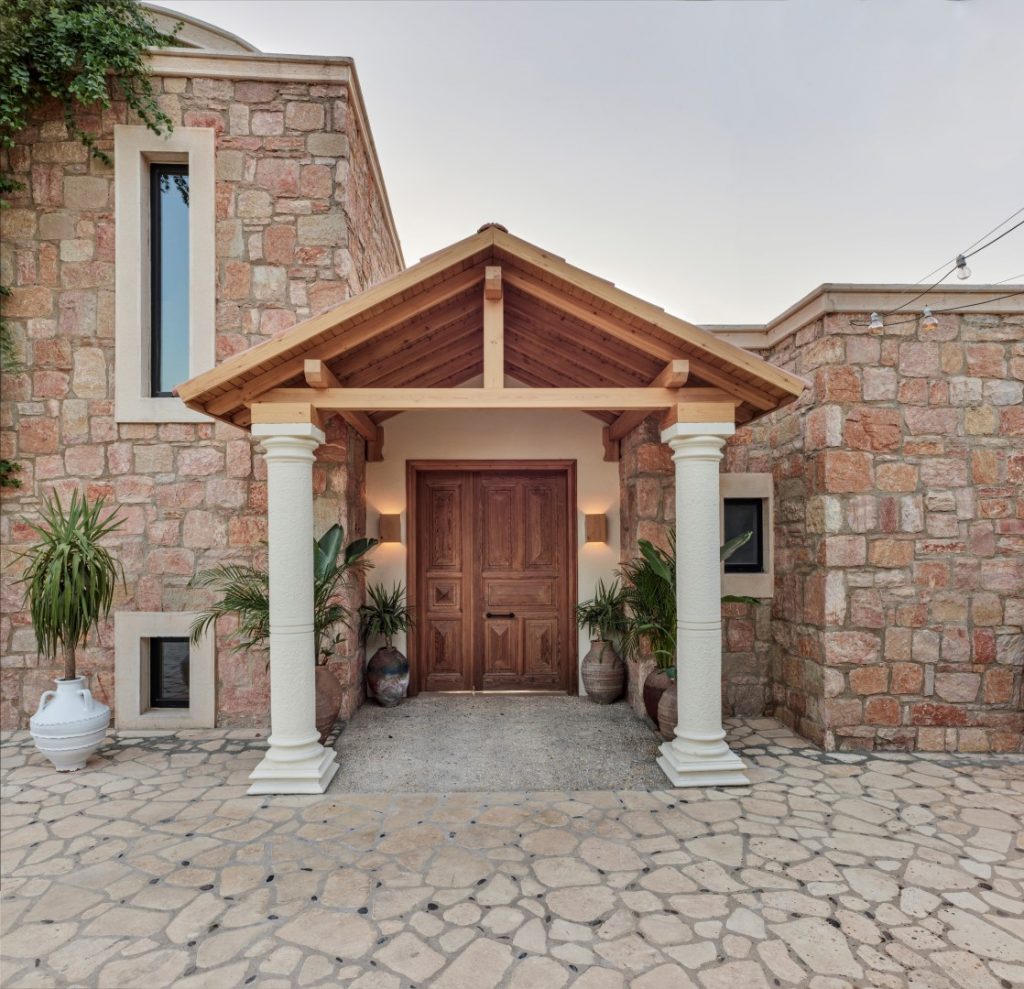
GKT Bodrum Evi / GKT Bodrum House. 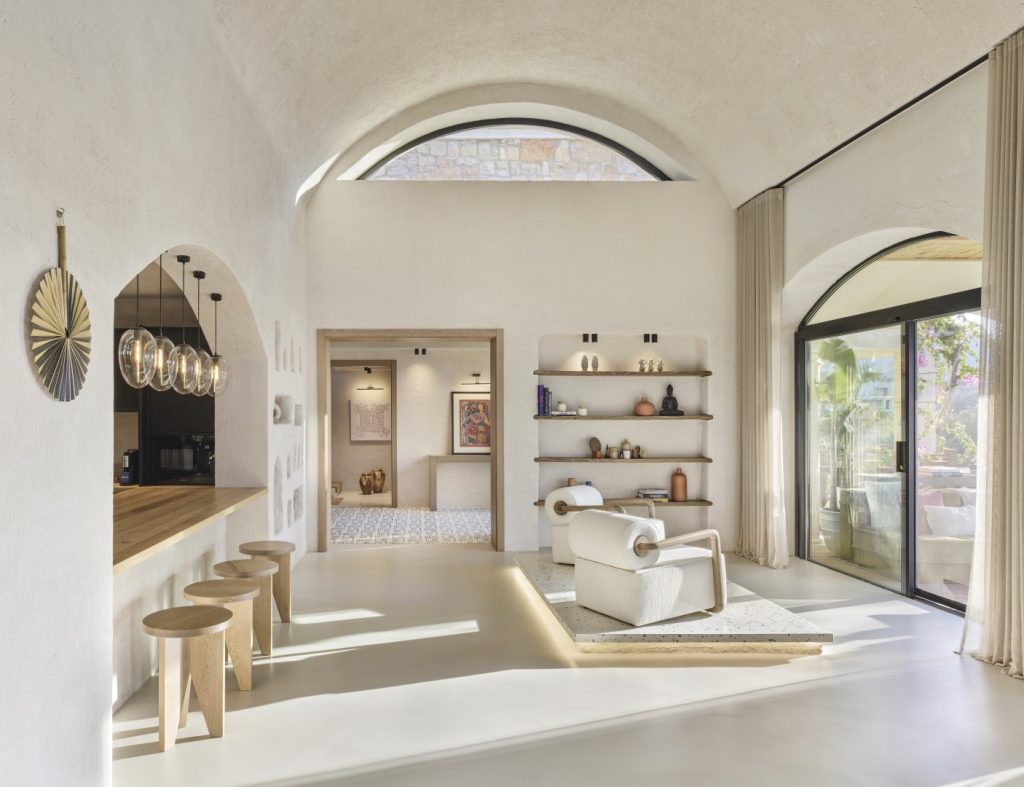
GKT Bodrum Evi / GKT Bodrum House. 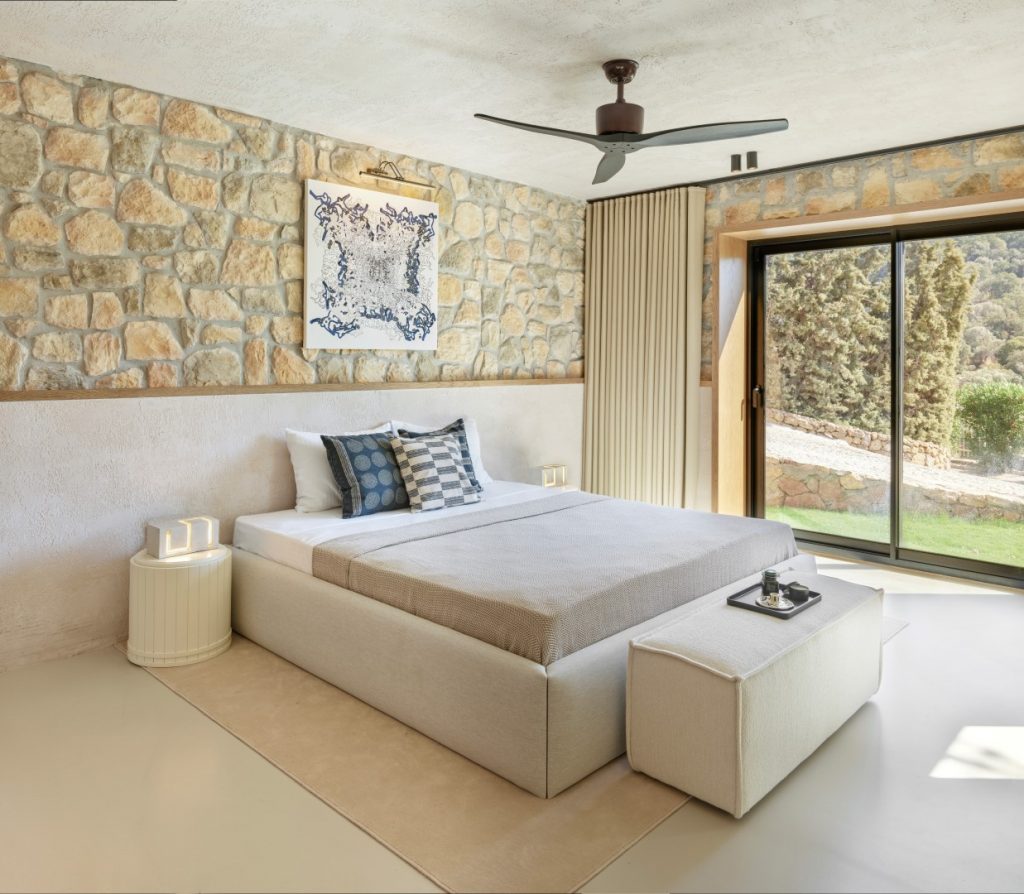
GKT Bodrum Evi / GKT Bodrum House. 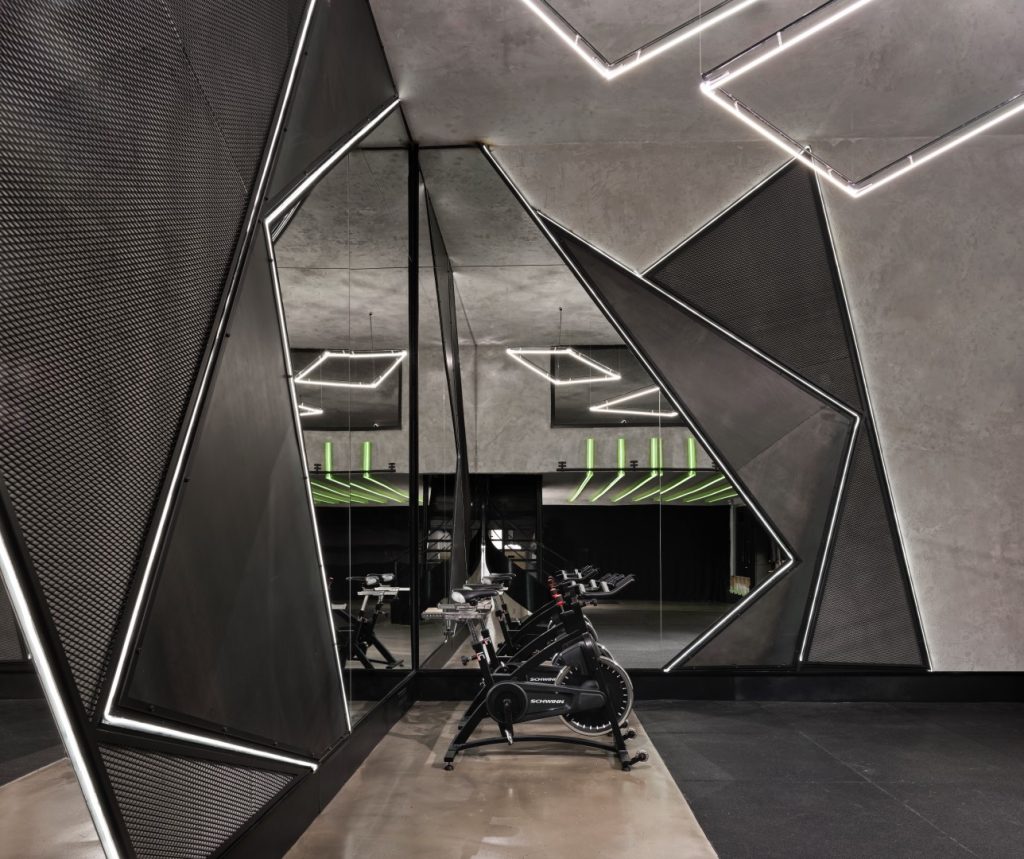
7.15 GYM. 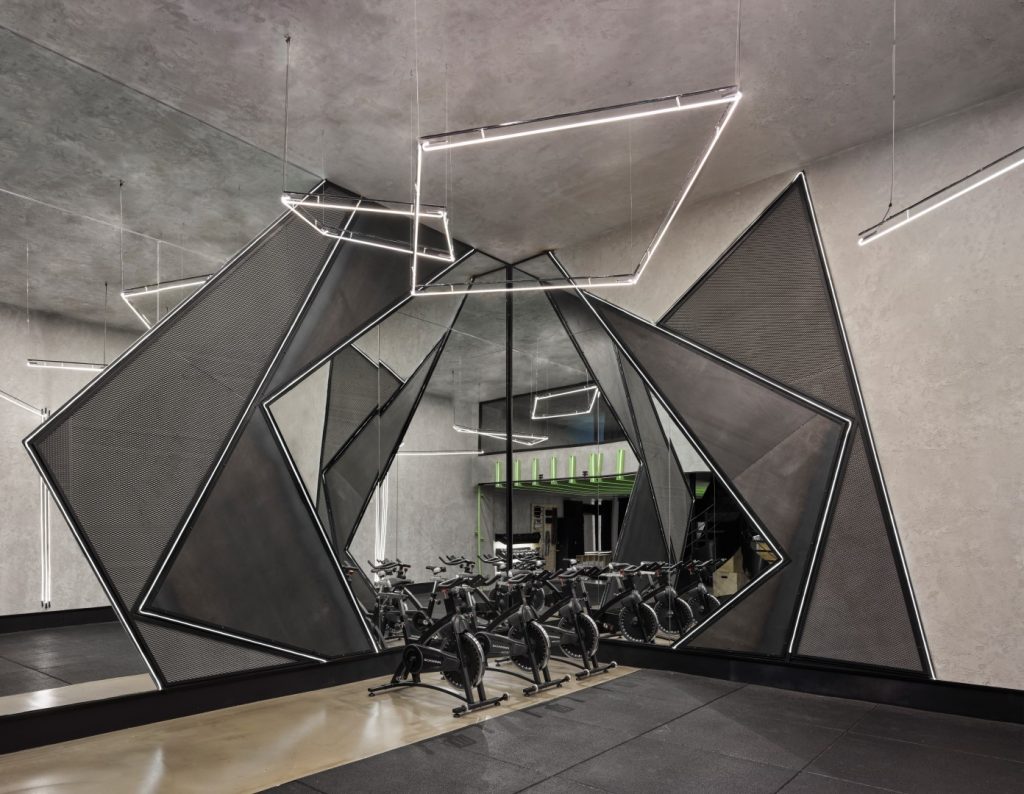
7.15 GYM.

